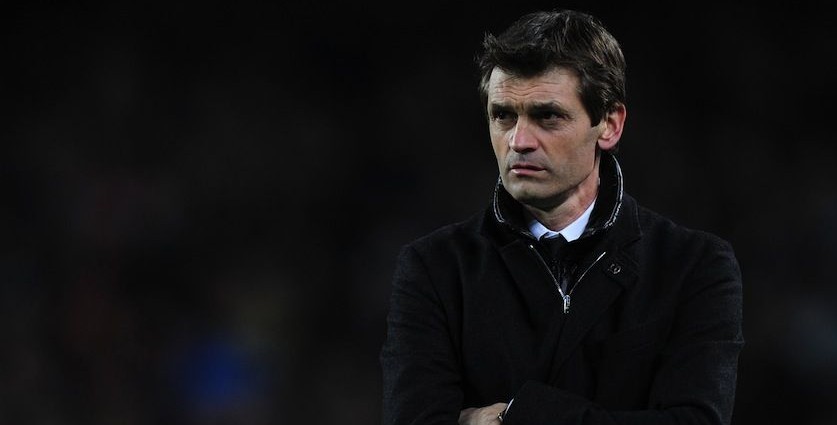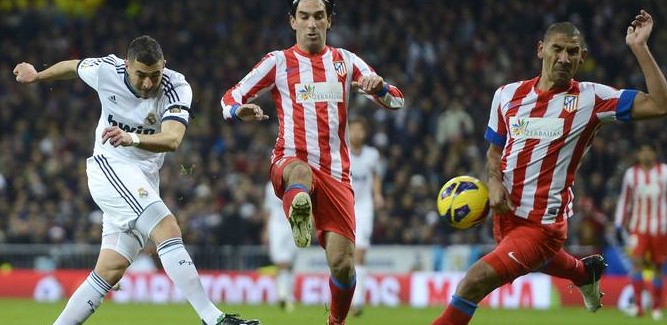- S.D. Eibar ready for maiden La Liga outing
- SD Eibar stengthen ahead of debut La Liga season
- Can ‘Super Mario’ live up to expectations in Madrid?
- MAN IN THE GROUND – Brentford 0 – 4 Osasuna
- Historic Basque derby welcomes S.D. Eibar to La Liga
- Munich to Madrid, via Brazil – Tony Kroos
- Rakitic in Spanish Switch
- Can Spain find redemption in Rio?
- Viva Espana! A season of redemption for Spanish football
- From the old to the new: who can fill the void in years to come for La Roja?
THE TACTICS CHALKBOARD – Barcelona 3-0 Racing Santander
- Updated: 18 October, 2011

By Jack Presswell
Pep Guardiola’s side cruised to a comfortable 3-0 victory over Racing Santander at the Camp Nou on Saturday night, securing La Liga’s top stop in the process.
The triumph came thanks to a Lionel Messi brace, which made hime Barça’s second highest all-time goalscorer, and a rare headed goal from Xavi Hernandez.
Considering the manner in which the Catalans have been sweeping teams aside this season at the Camp Nou (three games, three wins, 18 goals scored and none conceded), this fixture was always going to be a particularly tough one for Hector Cuper’s Racing.
With this daunting prospect ahead, it was interesting to see how the experienced Argentine coach would approach the game.
Somewhat predictably, he opted for an incredibly cautious and defensive minded approach.
Although going defensive against Barcelona does not always fail, see Mourinho’s Inter in the 2009/10 Champions League semi-final second leg, the way Cuper set up and implemented his own defensive strategy was always unlikely to be successful.
They lined up in a 4-5-1 formation with Mamadou Kone making his league debut as the lone striker with Pedro Munitis and Jairo flanking him.
There is little point looking at what Racing did with the ball, as they had a measly 17% of the possession.
While you would always expect Barça to have more than the lion’s share of possession, Racing having so little of the ball was partly their own doing.
In the first five minutes, Racing pressed Barça as high as their 18-yard box; this resulted in a slip-up from Maxwell that could have been costly.
Unfortunately, they did not stick with the pressing and it soon became clear that, the rush of exuberance you always get in the opening proceedings aside, Cuper wanted his men to get behind the ball and sit off their opponents.
Whenever Abidal (he replaced an injured Pique after eight minutes), Puyol or even Thiago Alcantara when he dropped deep, had the ball in their own half Racing’s midfielders would fall into the same shape, a static line of four about 10 yards off the ball carrier with Tziolis in a holding role about 10 yards behind them.
Kone would be left to make a token effort at pressing the ball or even he sometimes would join the midfield line.
This presented no problems to Barcelona.
One pass could easily take Racing’s midfield out of the game leaving Xavi and Iniesta in possession with just Tziolis marking them.
The clearest example of this is Barça’s second goal.
Thiago dissected Racing’s midfield with a pass to Iniesta, who laid it off to Pedro.
The other member of the midfield trio, Xavi, was able to continue his run into the box where Pedro’s accurate cross left him with a simple header.
Guardiola lined up with the traditional Barcelona front three of Villa, Pedro and Messi.
It is of course well known that Messi is very much a ‘false nine’ centre forward, however Barca’s attack as a whole is incredibly malleable with all three taking up positions in different areas.
With Xavi and Iniesta getting into the box from time to time and Dani Alves marauding forward, Racing’s strategy of sitting deep invited constant danger from six or seven attacking threats.
When you consider the individual ability of these players therefore, unless fortune is massively on your side, goals are surely inevitable.
This proved to be the case after just 11 minutes, with the goal epitomising Barcelona’s forward play.
Messi dropped off and received the ball as Iniesta made a run into the box.
Messi played a sublimely weighted ball to Iniesta who turned and played a short pass back to Messi in a crowd of four defenders, Messi took the ball past two of them, rounded the keeper and slotted home with ease.
It was intricate in traffic and they made it look so easy it was like the defenders weren’t there.
Without sounding repetitive or clichéd, there are so many examples of individual skill and technical flair about Barcelona, even in games like this when they are not performing at 100% following a tiring international break.
However, the beauty of Los blaugranas is that this goes hand in hand with systematic aptitude.
What Barça did off the ball was also impressive.
They didn’t wait for the other team to lose the ball; they set out to win it back.
The pressing was incessant, every time a Racing player had the ball, he would be closed down whilst three or four others would create a vacuum removing all immediate space. This would result in long balls to Kone.
If Kone did get the ball, then he wouldn’t always have the support he’d like as Barça’s full backs played high up the field which often occupied Pedro Munitis and Jairo.
With Alves and Maxwell making the runs they were for most of the game, and as they were in possession for 83% of it, Barça were more of a 2-5-3 as opposed to the on paper 4-3-3, especially as they didn’t have a holding midfielder in Mascharano, Busquets or Keita playing.
This invokes a siege mentality and as the game went on Racing fell deeper and deeper until they were, for certain periods, camped in their own box.
Barcelona now have control of their favourite area of the pitch, centrally just outside the penalty area, where they can pick the defence apart.
The full backs are now comfortable so they can control the flanks allowing the front three to operate in the danger area in and around the edge of the box.
This is where Barça’s third goal came from. Xavi showed great skill on the edge of the box, his effort came back off the post leaving Messi with a tap in. 3-0. Game over.
A late Abidal bicycle kick would have been the icing on the cake, but his acrobatic effort was saved.
Nonetheless, the outcome was never in doubt for the Catalans who, although not at their best, still had more than enough for a lacklustre Santander side.
The only downside being an injury to Pique on his 150th Barcelona appearance.
As for Racing, there were very few positives to take for Cuper, whose side are languishing in the relegation zone.
The only real bright spark was Kone, who played with vigour and enthusiasm and tried to be as incisive as he could on the rare occasions he got the ball.
He also battled well and showed good physical strength considering how isolated he was.
Ultimately, Cuper’s defensive-mindedness failed.
Going back to the Inter example, to park the bus successfully against Barcelona, you need to have a tactically sound defensive strategy and, more importantly, very good defenders.
Racing Santander had neither.
Follow @icentrocampista





You must be logged in to post a comment Login